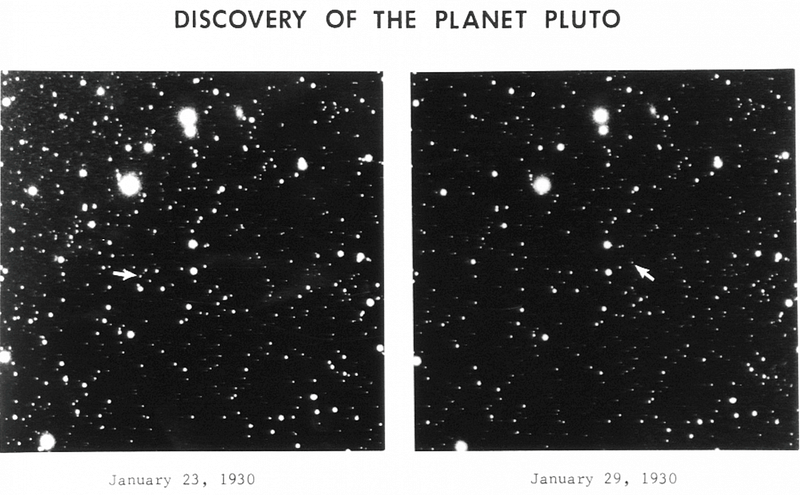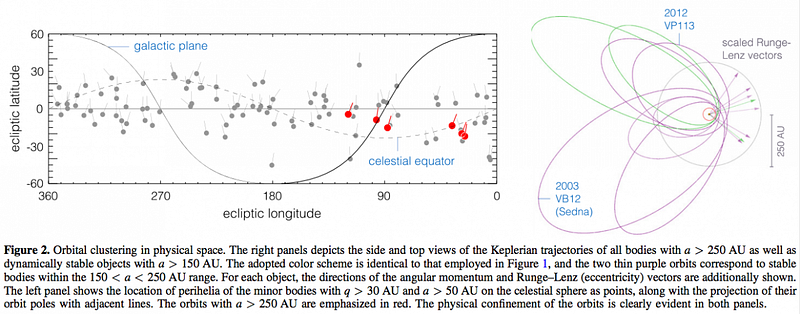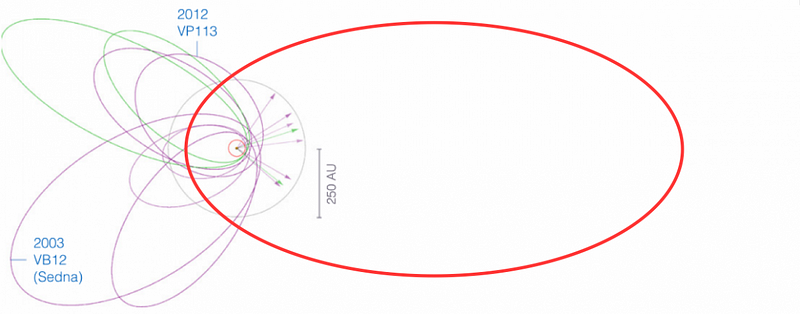Not So Fast: Why There Likely Isn’t A Large Planet Beyond Pluto

Planet Nine? More like “Planet maybe.”
“Finding out that something you have just discovered is considered all but impossible is one of the joys of science.” –Mike Brown
Last week, the team of Mike Brown — famous for killing Pluto-as-a-planet — and Konstantin Batygin made a spectacular announcement: they’ve found evidence for the existence of a ninth planet out beyond the orbit of Pluto. Unlike other claims of a large world far beyond the orbit of the known worlds (Planet X, Nemesis, a large, massive Pluto, etc.), this is based on more than just speculation: this time, there’s some compelling evidence. As Mike Brown himself said, “If you say, ‘We have evidence for Planet X,’ almost any astronomer will say, ‘This again? These guys are clearly crazy.’ I would, too. Why is this different? This is different because this time we’re right.” But are they truly right, or is this just more sensationalized crazy talk?
You might think the best way to discover a new planet is simply by pointing your telescope everywhere you think one might be — or possibly all over the entire sky — and just catalog anything that appears to be close by. After all, two of the most famous objects in all of astronomical history, Uranus, discovered in 1781 by William Herschel, and Pluto, discovered in 1930 by Clyde Tombaugh, were discovered in exactly this fashion. Although most people don’t know about them, this is the same exact way that asteroids were first discovered in the early 1800s and how Kuiper belt objects other than Pluto (and its moons) were discovered starting in the 1990s.

The reason this is such a good method is because it’s direct: you can directly image it. Moreover, you can distinguish it from an object farther away by tracking its motion over multiple images; something in our Solar System is close enough and moves quickly enough relative to all the other objects (stars, galaxies, nebulae, etc.) in the sky that it will move quickly enough to be easily discernible from everything else. But the farther away you try and look, the harder it is to image such an object:
- the amount of brightness an object emits falls off as one over the distance squared,
- the sunlight has to travel both to the planet and then back to us on Earth,
- and even a giant world, like Neptune (nearly 20 times the mass of Earth), isn’t that much bigger than Earth (not even four times the diameter), making them particularly difficult to spot.
That’s why there’s another method that’s so important: the indirect method, of looking for its gravitational influence on something we actually can see.

After the discovery of Uranus, the seventh planet, astronomers started noticing something strange about it. Rather than moving in its orbit at the speeds that Newton’s laws predicted for an object at its distance, it was observed to be moving too quickly at first (left panel) for a number of years, then at the predicted speed (middle panel), and then more slowly than predicted (right panel). While some decided that Newton’s laws were to blame, a few astronomers and mathematicians noted that the addition of another, outer massive world — one yet to be discovered — could explain that peculiar motion by providing an extra gravitational “tug” on Uranus. This planet’s position was predicted in 1846 by Urbain Le Verrier and discovered less than one degree from its predicted location just weeks after the prediction was made: Neptune.
Using a similar technique, Brown and Batygin have been looking at a number of long-period, highly eccentric Kuiper belt objects — the farthest-orbiting bodies ever found in our Solar System, worlds like Sedna — and discovered something very, very peculiar about their motion, too.

Do you notice how all the “grey” points (which are closer Kuiper belt objects) are all over the place? This means that they don’t appear to have had their orbits originate from any particular place or source in the sky. But do you notice how these more distant ones — the “red” ones in the figure above — they all occur in a narrow range of ecliptic longitude? That’s pretty unlikely just by chance: if you had six random objects and discovered they were all aligned by that, the odds of having them cluster this closely is just 1-in-140 or so.
But they’re also very clustered in ecliptic latitude, which is less obvious from the diagram, meaning that they make very similar angles with respect to the plane of the planets orbiting in our Solar System. The odds here are also long: about 1-in-100. Combined, the odds of these six objects existing with these properties just by chance is only 0.007%, or with a statistical significance of 3.8σ. So now the question is why? Why are these objects clustered like this? Brown and Batygin contend that something very likely caused these objects to have similar properties: a massive planet multiple times the mass of Earth — perhaps nearly the mass of Neptune — located hundreds of times the Earth-Sun distance out beyond the orbit of Pluto.

There are lots of reasons, however, to be skeptical that this is the bestexplanation of what’s out there. While it would be amazing (and deliciously ironic) if the person who killed Pluto as a planet was actually the person who found the Solar System’s “true” ninth planet, there are a number of consequences if our Solar System truly had a highly inclined, highly eccentric world orbiting out so far. They include:
- A population of opposite-aligned Kuiper belt objects with long periods: with the opposite ecliptic latitude and longitude to the six we’ve found.
- A large population of highly inclined objects in the Kuiper belt with medium-long periods and probably retrograde (opposite-direction) orbits to most objects.
- An additional, yet undiscovered mechanism to keep the semimajor axes of the discovered objects clustered between 150–250 A.U., or an additional population of similar objects to Sedna with even larger semimajor axes.
The first one has no such objects found; the second one had only Drac for a number of years (but four other have appeared by now; this may be true), and the third one has no mechanism and no objects that fall into this category.

This might not be such a negative for the idea, however. “We are trying to predict things that have not yet been found,” says Mike Brown. “That’s what you try to do with a good theory! We also predict things that have been found, but that’s less impressive.”
In addition, a planet that’s this massive — even at hundreds of times the Earth-Sun distance — won’t just reflect sunlight, but will radiate its own heat in the infrared. NASA had a satellite earlier this decade, the Wide-field Infrared Survey Explorer (WISE), that measured the entire sky in the infrared. While it found thousands of objects within our Solar System, none of them indicated a large world out beyond the orbit of Pluto. In fact, objects as massive as Saturn (or more massive, like Jupiter) were ruled out up to distances many thousands of times as far as the Earth-Sun distance. Objects like Neptune (or smaller) could exist out there in theory; this model’s prediction is right at the limit of what the longest-wavelength band of WISE could have detected. (In fact, Neptune itself is barely visible in the WISE data.) A follow-up mission using the same satellite, NEOWISE, has a chance of finding such a world, if it gets lucky.

It’s amazing that these objects — small worlds — of the outer Solar System are found aligned so particularly. It’s even more amazing that a single explanation, a massive, larger-than-Earth planet out beyond any other world ever detected, could explain them all. But it’s a big minus that two other classes of objects should exist in this scenario that have either no or unconvincing evidence, and that the theoretical cause of these objects, the ninth planet, hasn’t been spotted at all. “Nothing that we know about the solar system is complete,” adds Mike Brown. “We will keep finding more [objects with Sedna-like orbits]. Our prediction is that they will continue to line up.”
The possibility is tantalizing, and unlike the previous iterations of a “ninth planet” that have hit the news, there’s actually some good evidence this time. But is the evidence good enough to believe it? Not even close; not yet. For that, either the other predicted objects or — if telescopes like Keck and Subaru, missions like NEOWISE or a future ground-or-space-based project gets lucky — the ninth planet itself will need to be found. You can keep up with the status of the search for planet nine here. Until then, remain skeptical, because it’s quite likely that there’s a much more mundane explanation for what we’ve seen so far, and further evidence will point the way.
Note: both Mike Brown and Konstantin Batygin have been reached out to with questions about their work; Mike Brown’s responses have been incorporated into this post.
Leave your comments on our forum, and check out our first book: Beyond The Galaxy, available now, as well as our reward-rich Patreon campaign!





